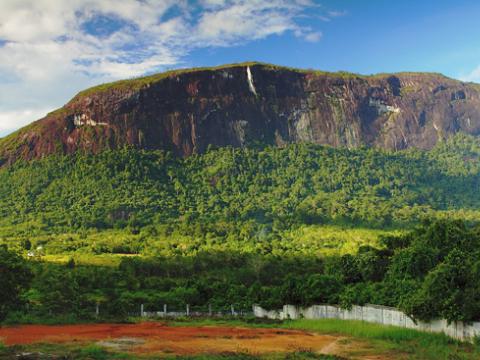Scenario Planning in the Heart of Borneo
In October 2018, CSF-Indonesia facilitated a scenario planning process for the Government of Sintang Regency. This process helps to define a unified vision for the future, and in this case, will help the Regency create a sustainable development plan through a multi-stakeholder forum.
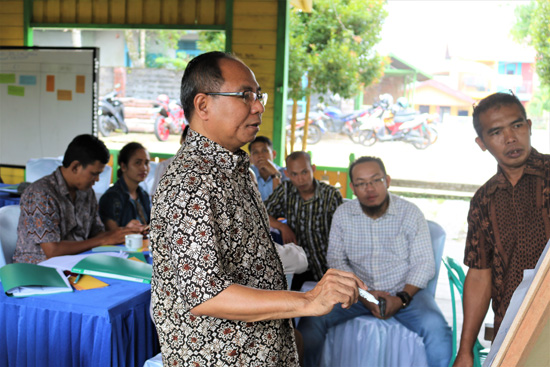
CSF Indonesia Director, Dr. Mubariq Ahmad, training 15 facilitators from various institutions, ahead of the workshop. Photo credit: Sopian Hidayat
During the first day of the workshop, we discussed the results of four background studies conducted by researchers from Universitas Sintang Kapuas (UNKAS). These studies examined the history, culture, and community of Sintang, as well as economic development patterns, the condition of biophysical and natural resources, and specific issues around the local land based economy - land governance, social forestry, and agrarian reforms. These studies were important in establishing a foundation on which the participants could develop their vision for a “Green Sintang”.
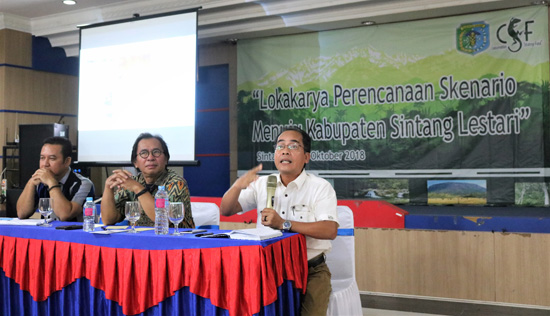
Stefanus Masiun discussing his findings. Photo credit: Sopian Hidayat
Stefanus Masiun, one of the UNKAS researchers, highlighted the changes that took place in the Sintang economy starting in the 1970s, with the introduction of rubber plantations and forest concessions, and an increase in illegal gold mining. These changes were influenced by the transmigration program of the Suharto era, in which people from populated areas were encouraged to move to unpopulated areas. In the 1980s, corporate, monoculture rubber plantations took over, and were replaced by oil palm plantations in the 1990s. In 2005, farmers began to transition to independent oil palm plantations (petani swadaya). Today, agriculture is still the primary driver of the Sintang economy and employs more than half of the workforce.
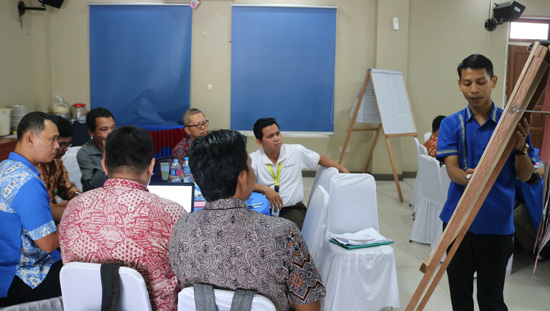
Pogo assisting participants. Photo credit: Sopian Hidayat
After the presentation of the background studies, participants discussed their hopes and fears for Sintang. Among their hopes were to preserve their culture, religion, social relations, and security; and to create a new province for Sintang with proper management and an adequate budget. Some of the fears revolved around natural resource management, land use and environmental degradation, diminishing socio-cultural and religious values, and worries about conflict, inequality, and lack of security. Many were concerned that leadership changes would derail development progress and improvements in welfare. From this discussion, the participants’ hopes and fears were summarized into five main priorities for the Regency: 1) healthy natural resources and ecosystems, 2) high quality human resources, 3) a strong economy that serves all people, 4) smart infrastructure and spatial planning, and 5) reliable sources of electricity.
At the end of the scenario planning process, the participants all agreed to a vision statement for Sintang Regency in 2030, “To achieve a Sintang where the people are secure and lead prosperous, harmonious, and dignified lives full of religion and innovation. The people of Sintang are supported by a sustainably managed natural resource base and well-designed infrastructure.”
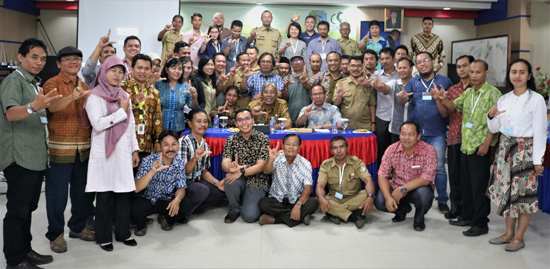
Stakeholders at the Scenario Planning Workshop. Photo credit: Sopian Hidayat
The next step in our long-term engagement in Sintang Regency is a training on Sustainable Landscape Modelling for technical GIS staff, to be held in January 2019. Stay tuned!
- Log in to post comments

